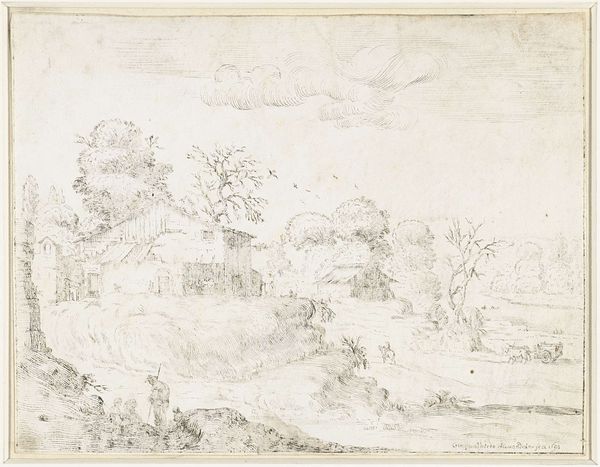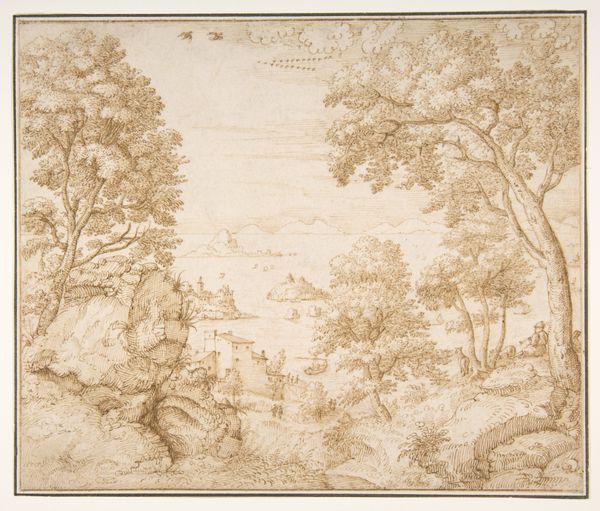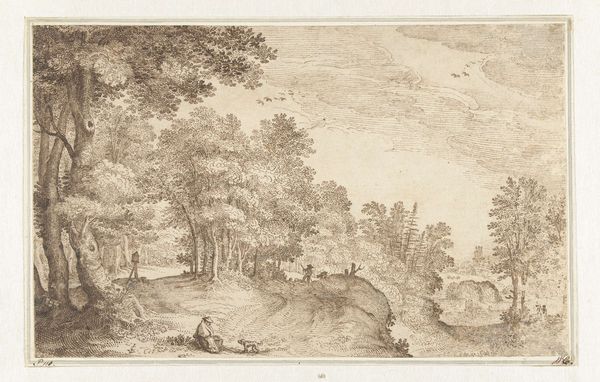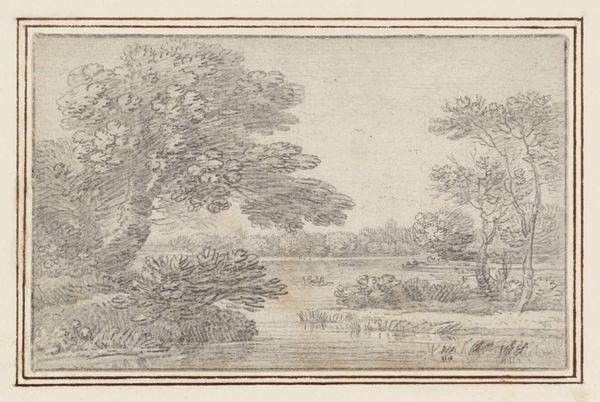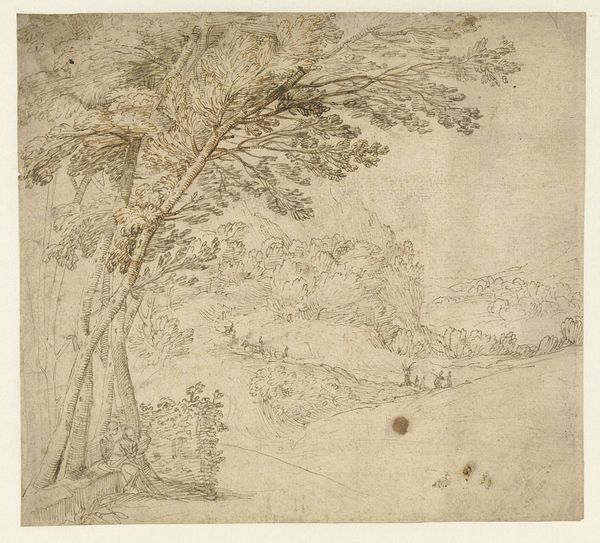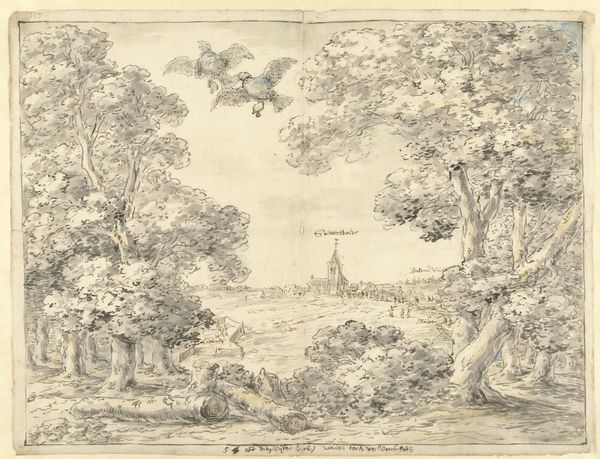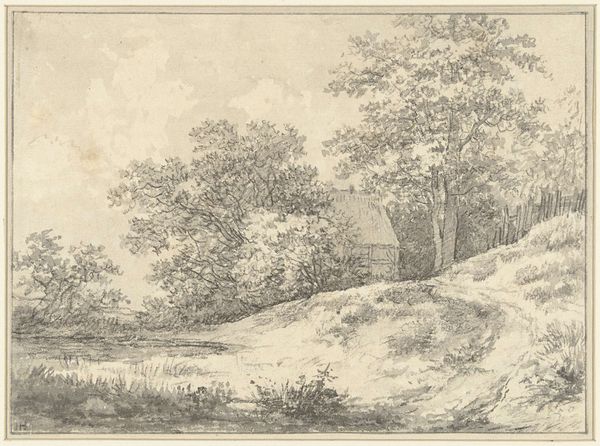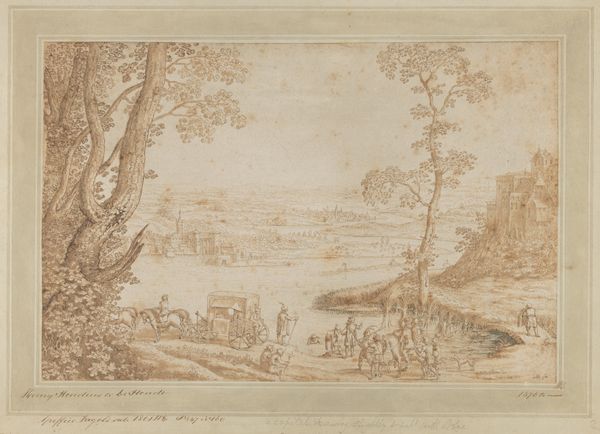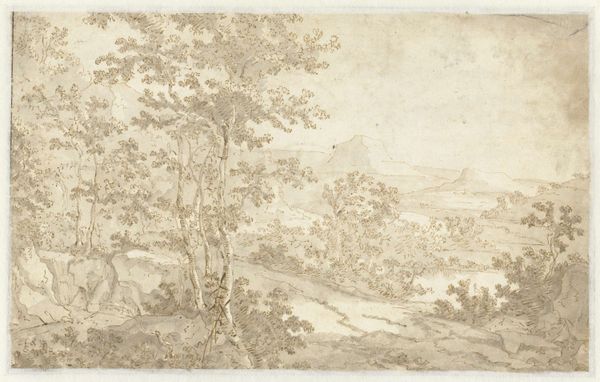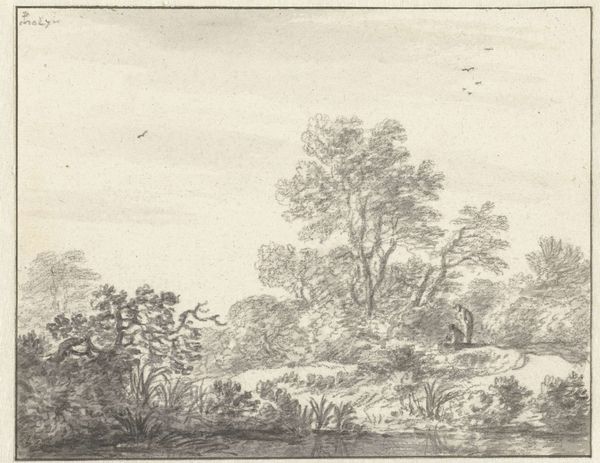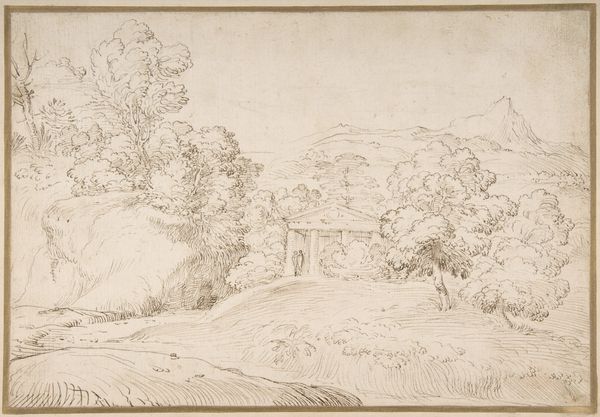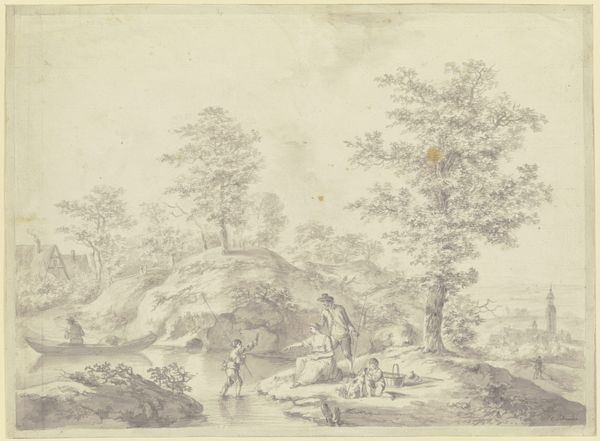
etching
#
narrative-art
#
dutch-golden-age
#
etching
#
landscape
#
etching
#
figuration
Dimensions: height 162 mm, width 207 mm
Copyright: Rijks Museum: Open Domain
Curator: Let’s discuss Albert Flamen’s etching, "Coach and Riders in a Landscape by a Wide Body of Water," dating roughly between 1648 and 1669. It’s a classic example of Dutch Golden Age landscape art. What strikes you first? Editor: The stark contrast. The delicate etching feels unfinished, as if waiting for additional layers of meaning. The trees, especially, command the scene— dominating almost the whole view. Curator: In that era, landscape art became a vehicle to reflect Dutch national identity and pride, especially after achieving independence. The ruling class in landscapes can be seen as a signifier of status. Editor: Precisely. Semiotically, it presents a tension between the cultivated and the untamed. Notice how the artist employs varying densities of lines to suggest depth. The fine network of etched lines in the foreground contrasts the hazy distant landscape. Curator: Think about who might have commissioned or consumed this print. Images like these served to reinforce a sense of order. It speaks to the evolving societal norms where aristocratic values were shifting due to emerging powerful traders. The landscape here represents not only the land itself, but the ideals associated with land ownership and status. Editor: The placement of figures further leads my eye across the frame. Look at the rendering of light, which, despite the monochromatic nature of the medium, seems to illuminate different focal points sequentially, constructing narrative of class, as you mention. Curator: Exactly. Etchings allowed for the broad circulation of these images, disseminating particular ideological messages across social classes and locations. Editor: Overall, as much as it has visual simplicity, the balance of light and the narrative structure makes "Coach and Riders" so compelling as an etching of social representation of land ownership in the 17th-century Dutch landscapes. Curator: For me, it shows how much the artistic traditions can shape, even invisibly, the social structures. We are always standing on the shoulders of the cultural and economic context from which images like this comes from.
Comments
No comments
Be the first to comment and join the conversation on the ultimate creative platform.
